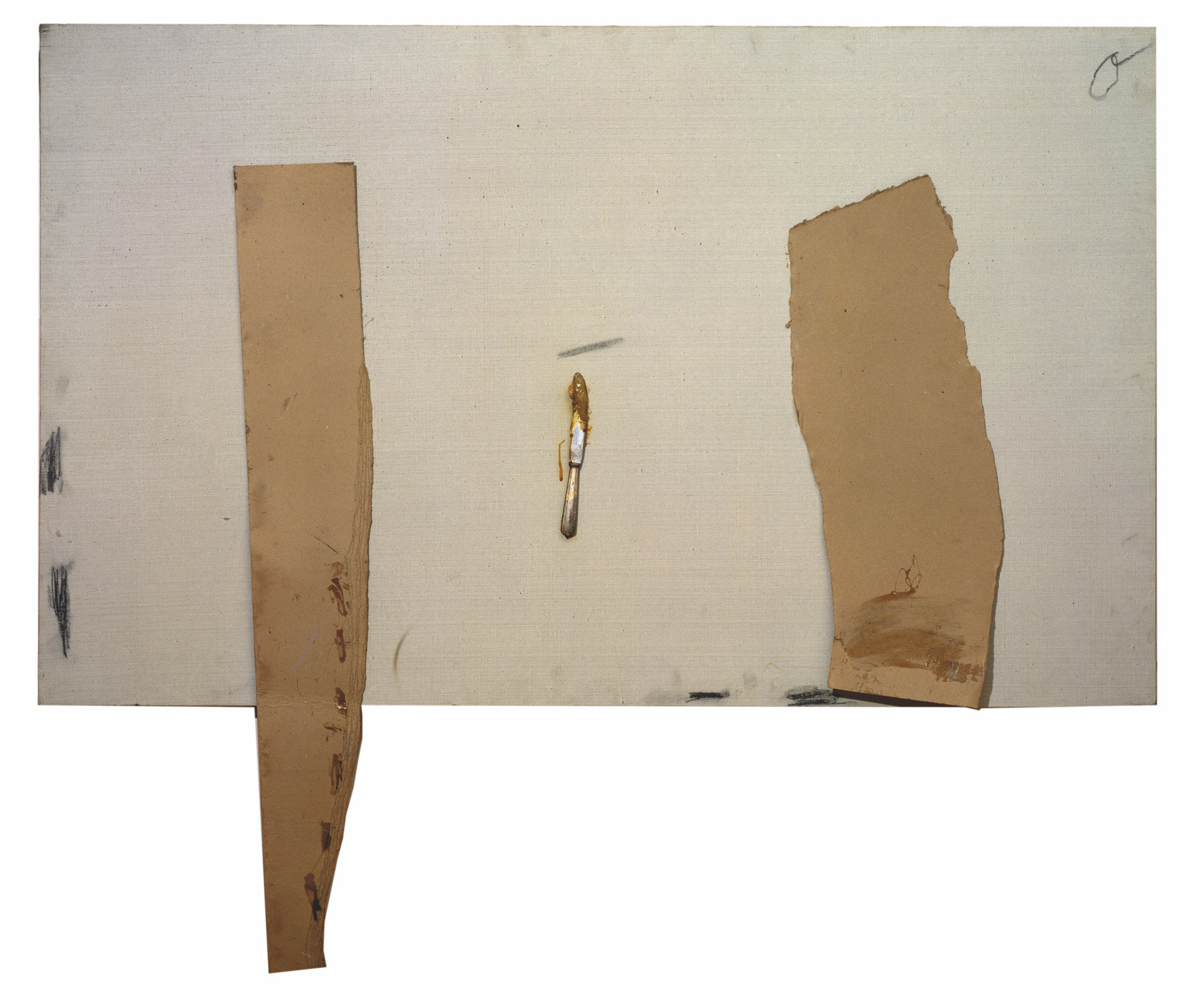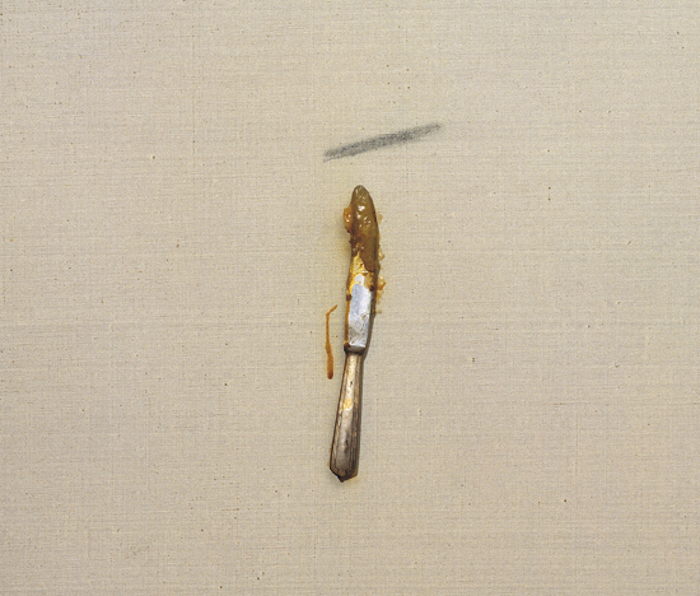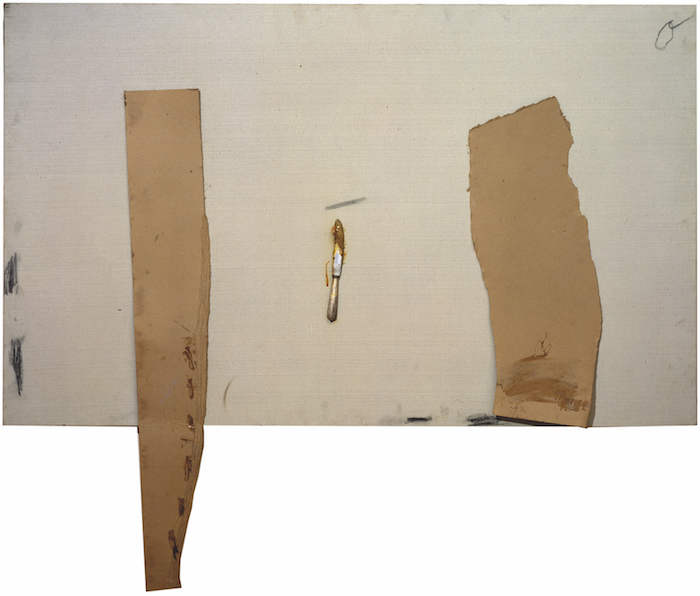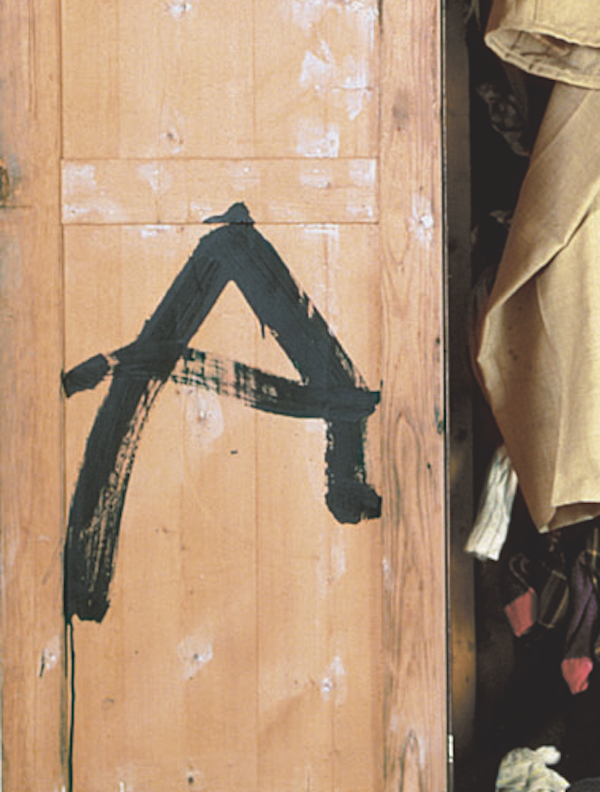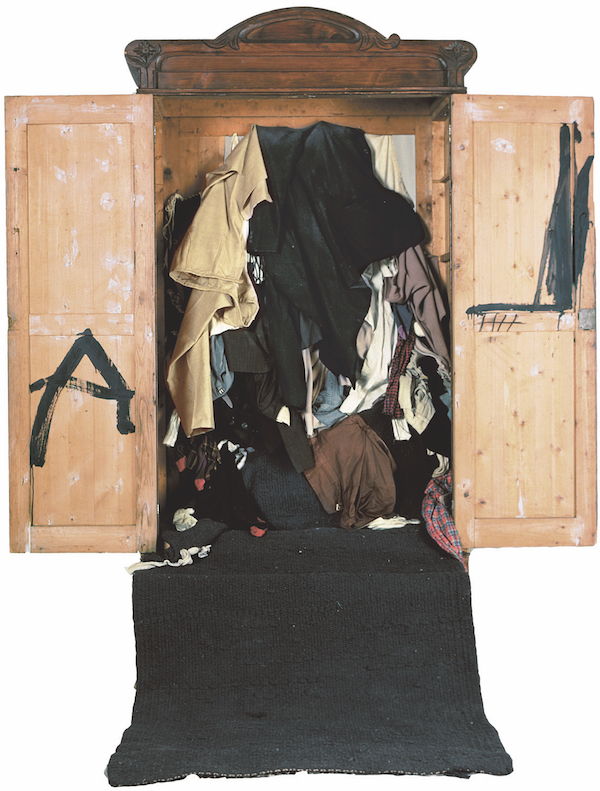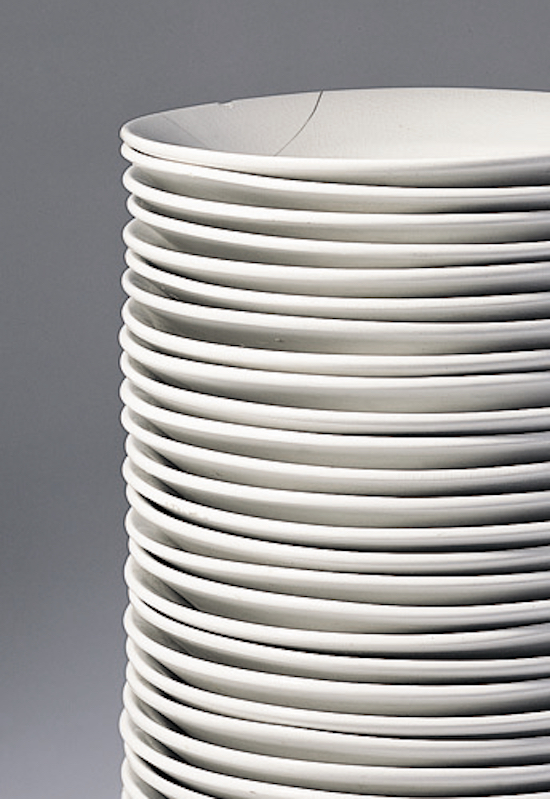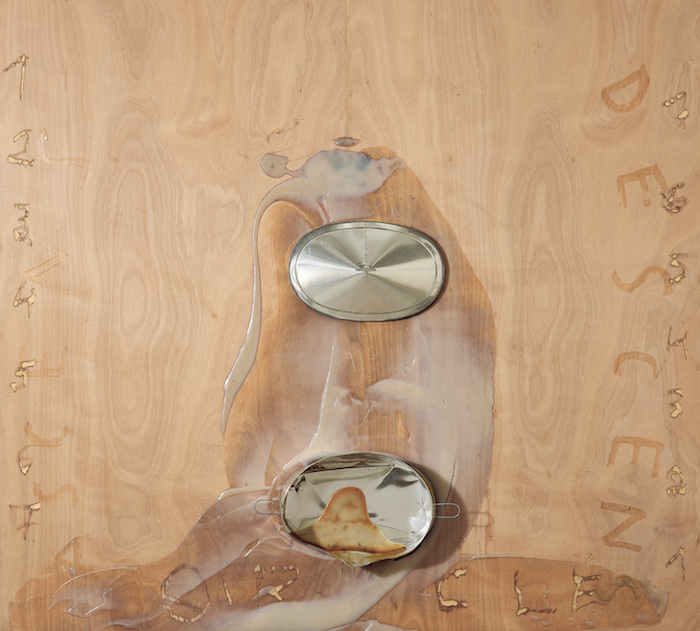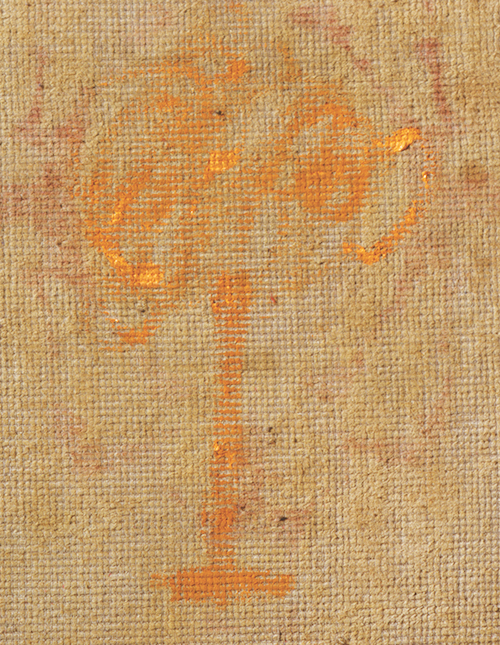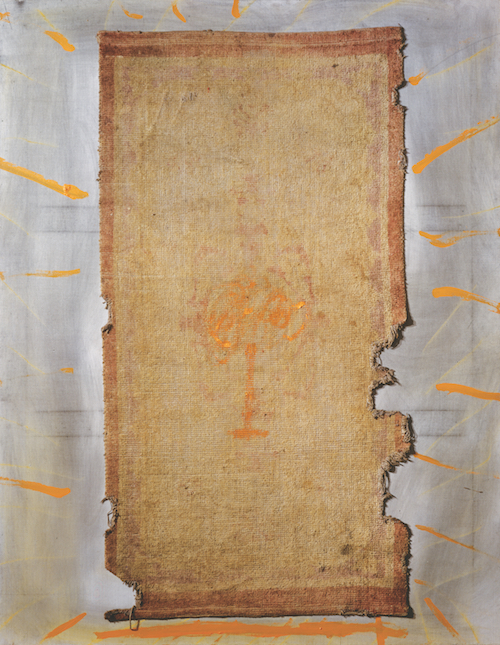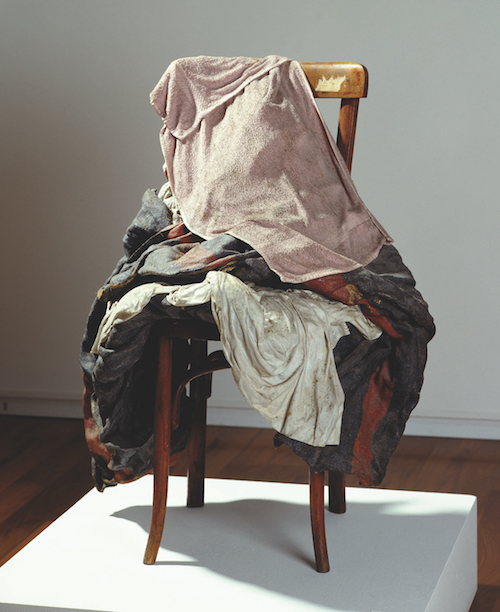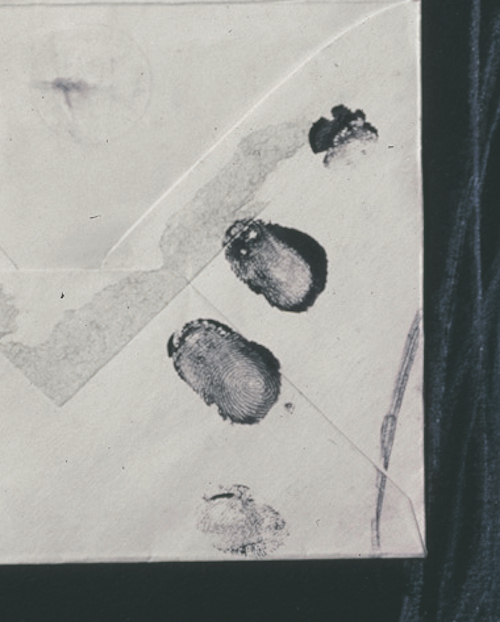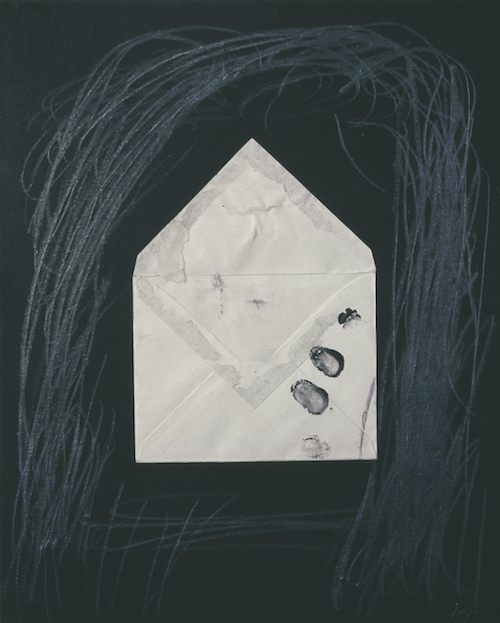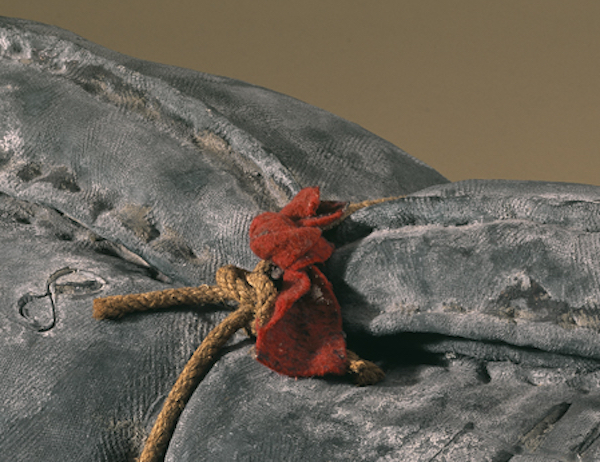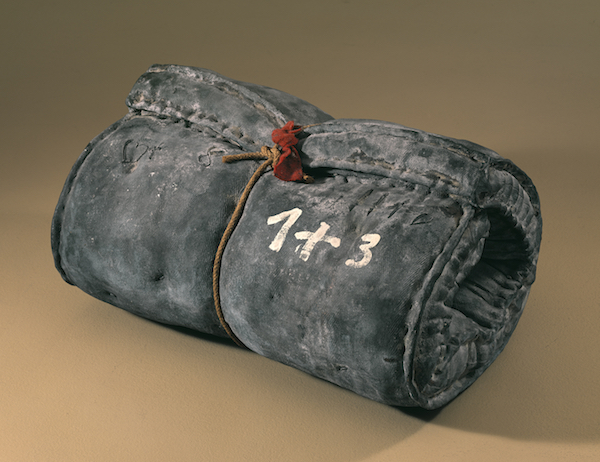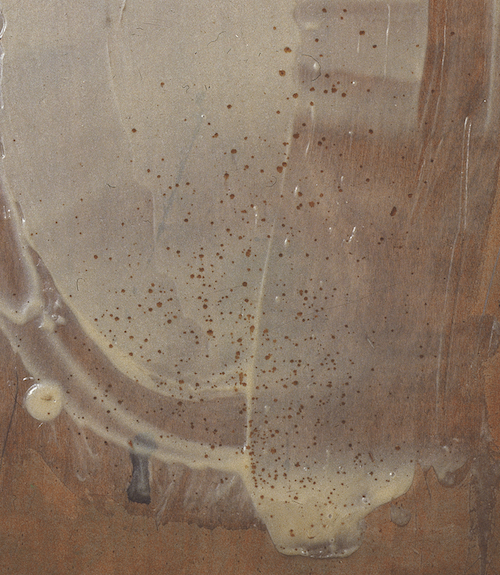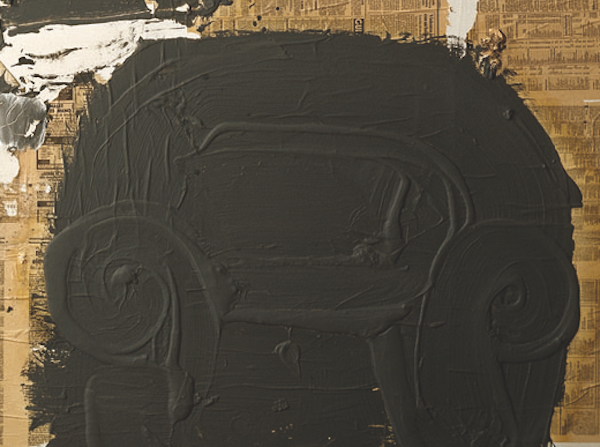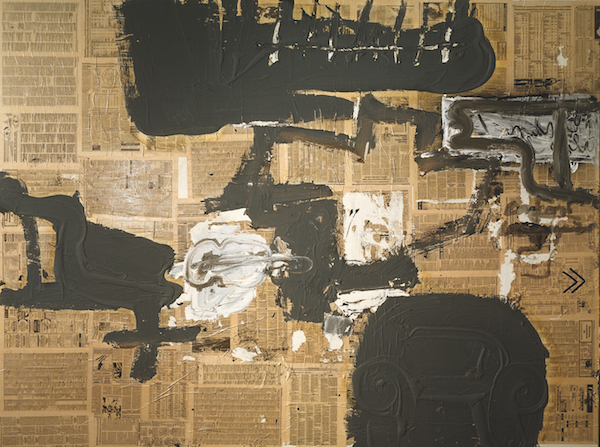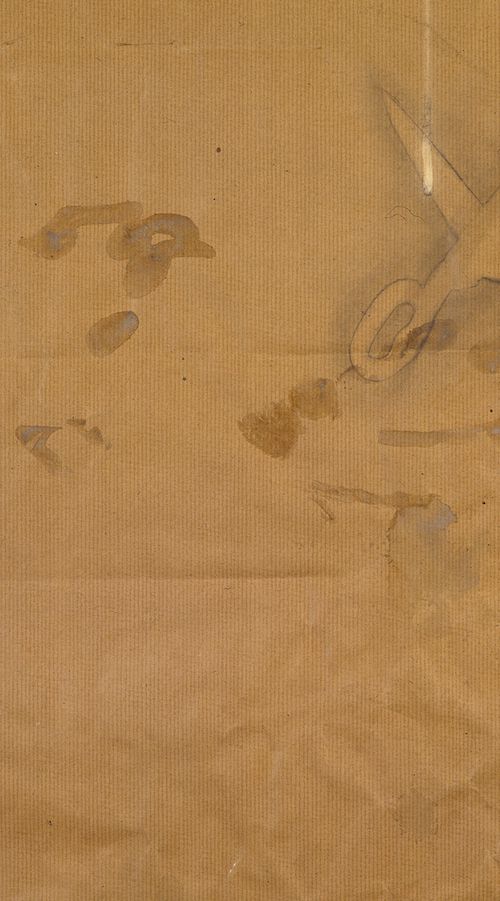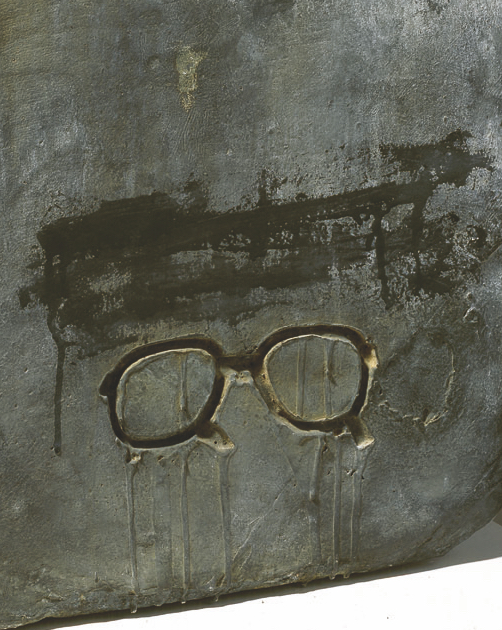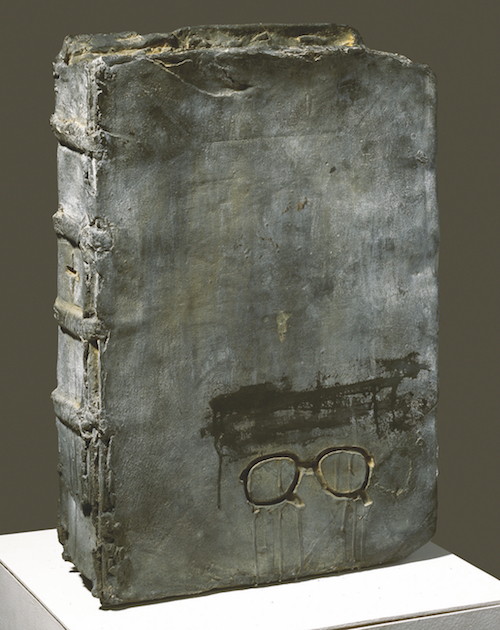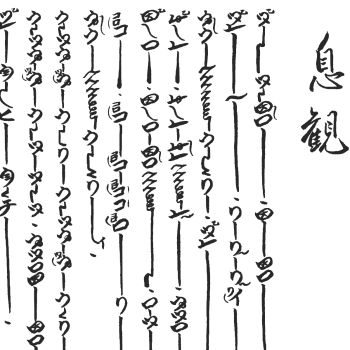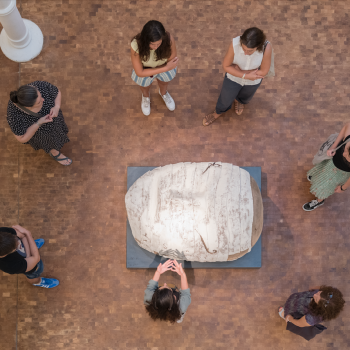“There are a number of reasons why I like to use banal, everyday objects. It may be partly because the objects that surround us in our everyday lives are the most accessible ones, the first ones you see, but I also use them because I want to exalt even the smallest, most insignificant objects. This goes along with the ideas of mysticism and particularly what Saint Theresa used to say about how you can find God even in pots and pans. The ‘cosmic’ quality I like to give things like chairs, scissors, a pair of espadrilles, is a way of showing that even an armpit can be every bit as transcendental as the most conventional sacred image.”
Excerpt from “Conversations with Antoni Tàpies, 1985-1991”, by Manuel Borja-Villel, in Communication on the Wall. Barcelona: Fundació Antoni Tàpies, 1991.
Antoni Tàpies, through his works, invites us to look at the objects around us from a new perspective. Tàpies tells us about the transcendent dimension that a pile of plates, a shoe or a basin can have. It all depends on how we look at it.
Antoni Tàpies
Ganivet i trossos de cartó, 1971
(Knife and Pieces of Cardboard)
Assemblage and pencil on canvas
124 x 146 cm
“But even in painting, my art is an art of objects. There are allusions to furniture – to chairs for example – and I often glue objects into my pictures. The collages are the ascendants of my sculptures.”
Excerpt from Conversations with Antoni Tàpies, by Barbara Catoir. Munich: Prestel, 1991. [Originally published as: Converses amb Antoni Tàpies. Barcelona: Polígrafa, 1988]
Antoni Tàpies
Armari, 1973
(Wardrobe)
Object-tapestry
231 x 201 x 156 cm
“Then there is the great Wardrobe, 1973, stronghold of vestments and vanities, that has been ransacked in a search for some triviality. Shirts are torn to ribbons, suits dumped as limp shapeless rags, the back of the cupboard smashed open, yet is shattered, yet we are caught in wonder at this monumental outrage to human dignity signed convincingly with a capital A. Our pride lies in tatters, yet violence, chaos and beauty nod compliments at each other.”
Excerpt from Tàpies, by Roland Penrose. New York: Rizzoli, 1978.
Antoni Tàpies
Pila de plats, 1970
(Pile-Plates)
Object-assemblage
40 x 23 x 23 cm
“Like the fair magician, Tàpies knows that everything is a trick and that what matters is not the end result, but the game itself, the emotional relationship that is established between the artist and the spectator through an object.”
Excerpt from “El realismo de Antoni Tàpies”, by Manuel Borja-Villel, in Campos magnéticos: escritos de arte y política. Barcelona: Arcadia, 2020.
Antoni Tàpies
Ascens-descens,1997
(Ascent-Descent)
Mixed media and collage on wood
200.5 x 220 cm
“The object, however banal, becomes, as do all Tàpies’ symbols, part of the emotional stimulation generated by the work as a whole which demands to be lived, to dance in the imagination and become elevated to the intensity of a solemn ritual.
Frequently is the presence of a familiar object in unexpected surroundings that awakens us, but he has also found other ways by which an object in a more active role can burst into the picture or entice our thoughts and drive them into contemplation of the inevitable duality of our existence and the cycle of death and rebirth.”
Excerpt from Tàpies, by Roland Penrose. New York: Rizzoli, 1978.
Antoni Tàpies
Catifa, 1970
(Rug)
Paint and assemblage on canvas
146 x 114 cm
“The goal of the picture was not to represent things, or describe things as in academic painting, but it had to be a thing, an object loaded with mental energy. The artist had to insert in his work a kind of electric charge that ought to unleash concrete emotions when touched by a viewer with requisite sensibility, one on the same wavelenght”.
Excerpt from “Vocation and Love”, by Antoni Tàpies, in A Personal Memoir. Fragments for an Autobiography. Barcelona: Fundació Antoni Tàpies; Bloomington: Indiana University Press, 2009. [Originally published as: Memòria personal. Fragment per a una autobiografia. Barcelona: Crítica, 1977].
Antoni Tàpies
Cadira i roba, 1970
(Chair and Clothes)
Object-assemblage
94 x 76 x 63 cm
“I experienced the necessity of insisting on and going deeper into that message of the insignificant, of things worn out, dramatized by time. Alongside grand ‘mural’ compositions – accompanied by shouts or silence – stand the residues of every day. I again consciously picked up themes that had often attracted me. [….] But the piece of cardboard, the box, the lid, the tray, or, later, straw, dirty clothes (socks, undershirts, underpants), old furniture, everyday things… I did not use them as a representation or the theme for the picture, but rather as veritable bodies, objects.”
Excerpt from A Personal Memoir. Fragments for an Autobiography, by Antoni Tàpies. Barcelona: Fundació Antoni Tàpies; Bloomington: Indiana University Press, 2009. [Originally published as: Memòria personal. Fragment per a una autobiografia. Barcelona: Crítica, 1977].
Antoni Tàpies
Collage amb sobre, 1966
(Collage with Envelope)
Pencil, ink and collage on paper
37.5 x 30 cm
“Many of the paintings I’ve done are simply marks of the human body, a footprint, or the imprints of my arm or my hand. This is to demonstrate that materials have a power and that many meaninful changes have taken place in these materials. It’s similat to the way the Buddhists often depict Buddha’s passage through the world not by showing Buddha as a physical being but by showing things he touched or left behind him. This whole feeling of things that have already happened is also a reflection on the subject of time. Footprints, marks in the materials used, all show the passage of time, the ephemeral nature of things.”
Excerpt from “Conversations with Antoni Tàpies”, by Manuel Borja-Villel, in Tàpies. Communication on the Wall. Barcelona: Fundació Antoni Tàpies, 1992.
Antoni Tàpies
Matalàs, 1987
(Mattress)
Paint and assemblage on bronze
58 x 110 x 71 cm
“For all the talk of the spiritual values of art and literature, it is commonplace to remember that at all times many an artist’s mind has been reputed closer to materialist and sensual conceptions, of ‘things as the are’, of what you can touch and feel, of the earthly and even carnal, than to the rejection of the world proper to those who sustain the primacy of the spirit.”
Excerpt from The Practice of Art, by Antoni Tàpies. Antoni Tàpies. Collected Essays. Barcelona: Fundació Antoni Tàpies; Bloomington: Indiana University Press, 2009. (Complete Writings, vol. 2). [Originally published as: La pràctica de l’art. Barcelona: Editorial Ariel, 1970].
Antoni Tàpies
Taula capgirada, 1970
(Up Set Table)
Paint and pencil on object
215 x 183 x 40 cm
“The materials and objects which Tàpies uses in his art are never new, nor are they elegant. They are crude and humble in origin and character. His ‘poor’ art constitutes a defence of valueless things in a world of material abundance.”
Excerpt from Conversations with Antoni Tàpies, by Barbara Catoir. Munich: Prestel, 1991.
Antoni Tàpies
Concert, 1985
Paint on newsprint glued on canvas
225 x 300 cm
“I remember that, on one occasion, Juan Eduardo Cirlot told me that some of my forms reminded him of mysterious sounds, dramatic percussions… And I don’t think it was by chance, given my great veneration for music; or for some kinds of music, to be more precise.”
Excerpt from “Papers, Cardboard and Collages; Conversation with Antoni Tàpies”, by Manuel Borja-Villel, in The Tattoo and the Body. Barcelona: Fundació Antoni Tàpies, 1998.
Antoni Tàpies
Silueta de tisores, 1966
(Scissor Outline)
Mixed media on kraft paper
116.5 x 62.5 cm
“X can be a sign of mystery, of the unknown. It can be a way of crossing out something, eliminating it, and it can be a signal that draws the viewer’s eye to a particular place in the painting. Sometimes I have unconsciously used X’s and crosses because I realized that they gave a special strength to the painting I was working on. They are very simple signs, but they are so filled with ideas and age-old symbolism than even just placing them in a corner of a canvas gives a painting a curious sort of strength. This is probably the same reason that I frequently use scissors. Open scissors have this X-shape which I find very expressive.”
Excerpt from “Conversations with Antoni Tàpies”, by Manuel Borja-Villel, in Tàpies. Communication on the Wall. Barcelona: Fundació Antoni Tàpies, 1992.
Antoni Tàpies
Llibre II, 1987
(Book II)
Paint on bronze
55 x 38,5 x 12 cm
“Actually, I did not read many of them, but looked at them or touched them. I loved feeling them in my hands. I was very impressed by the smell of a book. Books, their material aspects, talk a lot about the aesthetics and history of an era. […] The emotion of opening a book, of gradually discovering its contents, what lives inside, has something of a ritual, of a magic, which is without a doubt part of my work.”


